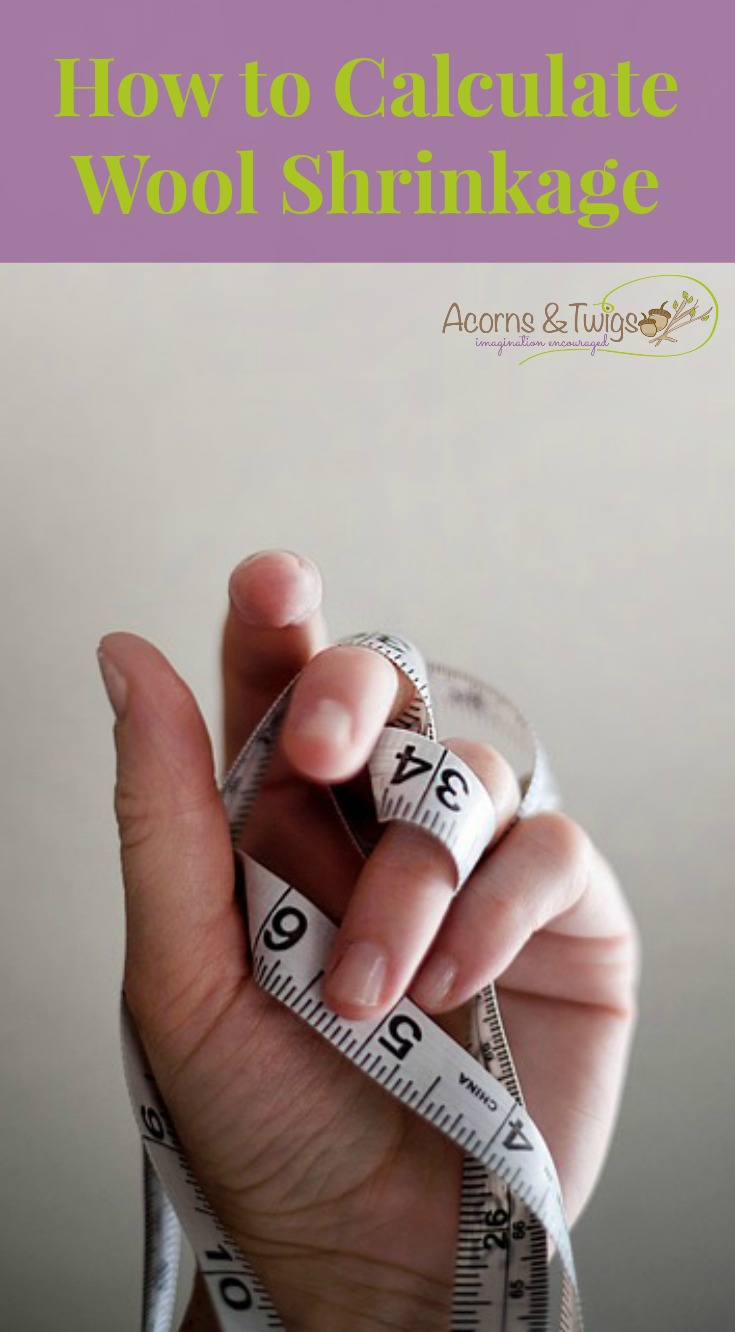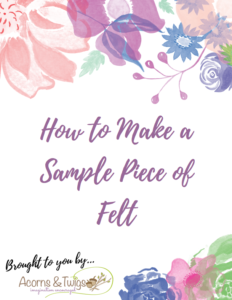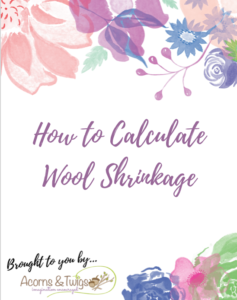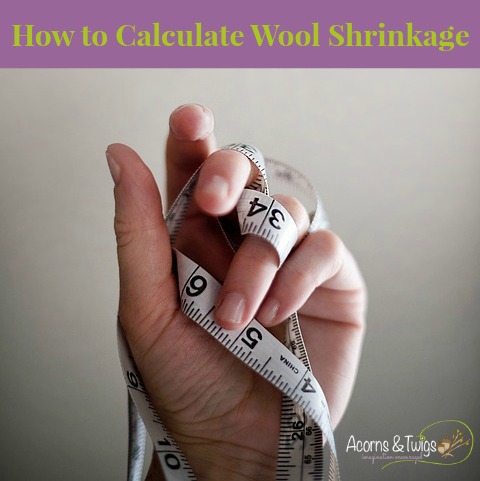If you are planning on wet felting something with out a template, it is important to know what to expect. You most likely know that your wool will shrink, but do you know how much?
You usually have a general idea what size your finished product should have either because it needs to fit someone (hat, shoes, dress etc.) or something (vase, tablet, chair) or just because you have it pictured in your head already.
 And let’s face it, wet felting is (usually) not something where you just fling it. I would be pretty darn upset if I spent several hours, or even days and a lot of my precious wool to make a jacket, that in the end doesn’t fit.
And let’s face it, wet felting is (usually) not something where you just fling it. I would be pretty darn upset if I spent several hours, or even days and a lot of my precious wool to make a jacket, that in the end doesn’t fit.
You might have read somewhere that wool usually shrinks about 30% during felting. That is a nice assumption but it is wrong. Just plain wrong. You can not just blindly assume all wool will shrink the same and that you can just add 30% to your finished desired measurements. Please do me a favor and forget about percentages. That won’t help us here.
Let me explain
There are sooo many different factors that you need to take into consideration to determine shrinkage rates.
- The type and fineness of your wool. Species, Micron size, staple length and even color all play a very important role during shrinkage.
- What directions the fibers are laid out.
- The number of layers. If you laid an odd number of layers, your wool will felt more in the direction that has more layers.
- How you fulled – which direction did you roll it? How many times? Did you toss or slam it?
- The temperature of your water.
- Things added to your wool such as silk, fabric or other decorations.
With that many influences, how are we supposed to ever properly pre-calculate the size??
May I introduce…
When ever I buy new wool, the second thing I do (after I have snuggled, sniffed and adored it for a long time), usually about 5 minutes after I have put the kids to bed, is test felt it. I want to get to know the wool. Every wool is different, and you should properly become acquainted.
You’ll want to determine: how it feels, it’s texture, is it coarse or fine, does it have a crimp (this has already be done during our snuggle time, remember)? Next you will want to find out, and take note of it’s shrinkage after wet felting it. This means you need to measure it before and after felting.
I like to write down the measurements, the shrinkage rate, how many layers I laid, the name of the wool, where I bought it, it’s micron measurement and anything else I might find interesting on a little piece of paper and pin it to the finished felt. I keep these little testers all together in a storage box.
Also look at how the surface has turned out after wet felting it. Can you still see the single fibers or has it turned into a very smooth, light felt?
Not only can you determine the shrinkage rate, but also how much of the wool you will need for your next project.
How do I make a Test Piece?
If you have never wet felted before, then this is a great tutorial to get you started. I will show you how to layout your test piece, and felt it. It is a great way to gain some experience before jumping into a bigger project.
 [convertkit form=5015931]
[convertkit form=5015931]
Let’s get into the math!
If you already have experience in wet felting, and making a test piece is a no brainer for you (even if you are not excited about it, you know you have to do it) then you can go ahead and get started by downloading my shrinkage rate calculating worksheet.
The worksheet will be invaluable when you are creating felted clothing, accessories, shoes, decorations or anything requiring a shrinkage calculation.

[convertkit form=5015932]

